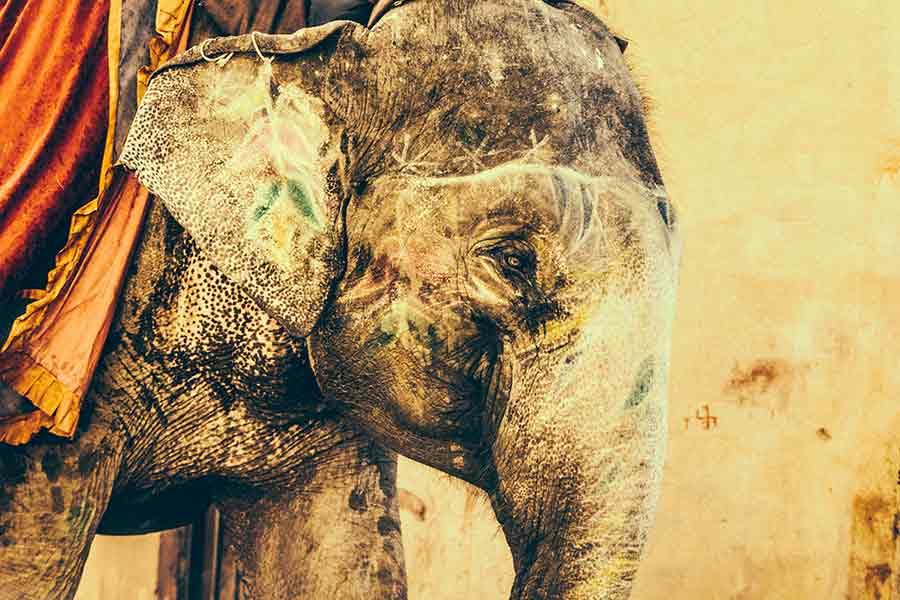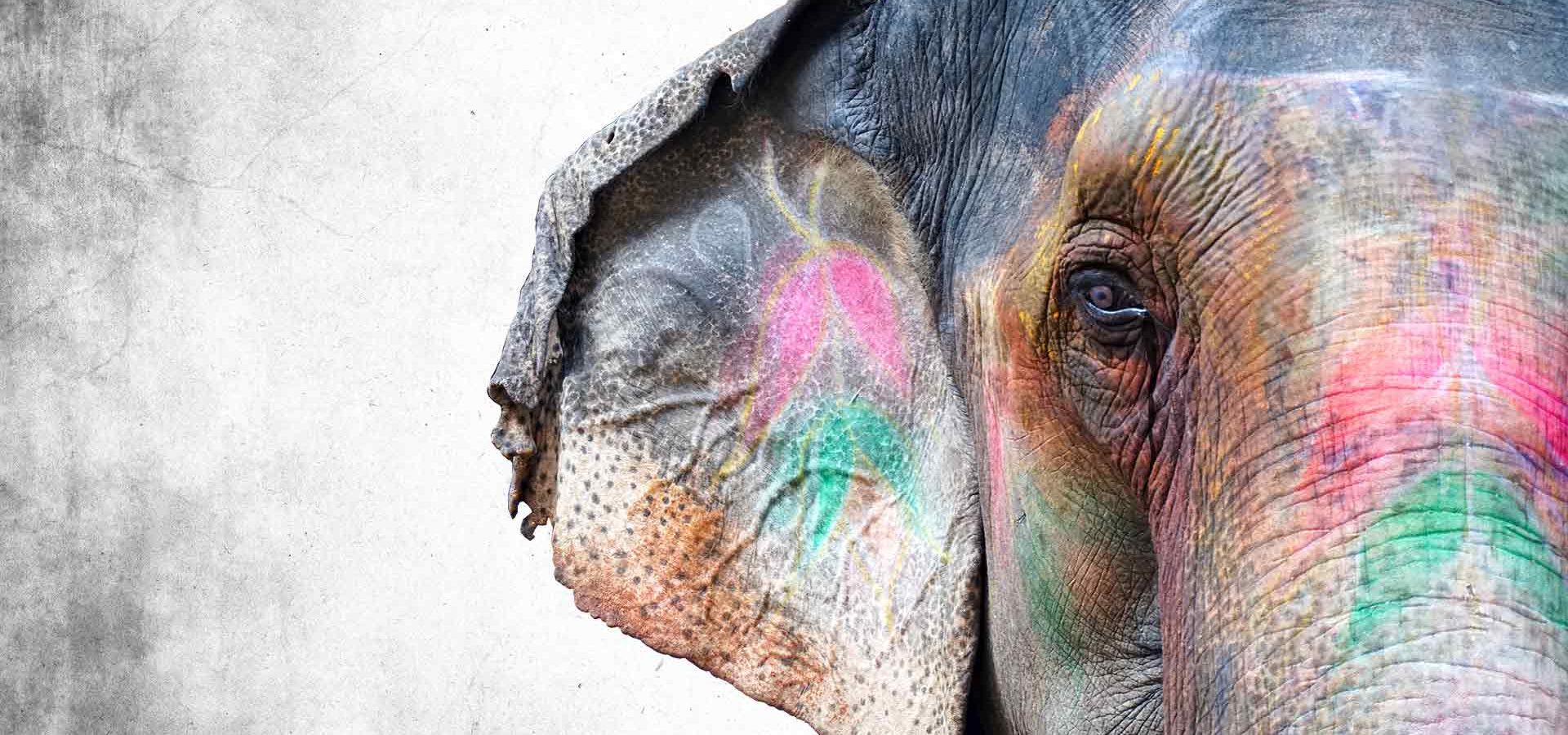A few moments of fun on an elephant’s back for a tourist can mean a lifetime of abuse for the elephant.
Few people realize that the captive elephant giving rides to tourists were wild elephants not so long ago. Elephants are wild animals with wild instincts and belong in the deep jungles. Then how is it they are found giving rides to tourists in Asia?

The spine-chilling images and videos of elephants being “trained and tamed” for use in tourism recently surfaced on the Internet. Most people were baffled at seeing these horrifying images. While it is heartbreaking, it is important for everyone to know that to force a wild animal like an elephant to do something so unnatural and vastly different from its normal behaviour such as carrying tourists on its back or walking in a wedding procession on busy noisy streets will require extensive training and copious amounts of negative reinforcement.
It all starts when the baby elephant is illegally trapped and separated from its natal herd. This is followed by a harsh training procedure called “phajaan” that uses pain and fear to break the spirit of the wild pachyderm. Severe confinement and isolation while being restrained with tight ropes and subjected to beating, prodding with bull hooks and spears, starvation and constant psychological abuse eventually makes the elephant a reliable tourist ride. Once this inhumane process is completed, what one has is one less elephant in the wild and one more elephant with a destiny of torture slated for it.
Sitting on the back of an elephant may be on a tourist’s bucket list for a royal experience, however the veil behind this seemingly harmless experience conceals a very dark secret, a secret that elephant owners and their riders will hide from the naïve tourists. The only way to train an elephant to perform tourist rides, tricks in circuses, weddings or other public functions and processions is through keeping the elephant in constant pain, fear. There is sadly no other way!
Moreover, it is not safe for tourists to ride elephants. Elephants are wild animals, and despite years of breaking their spirits, they are very much susceptible to succumbing to sudden trigger reactions like fear, stress and anger. Very often in a bid to escape their torturous lives, these elephants run amok or retaliate – putting at risk the lives of tourists and bystanders as well as the persons riding them.
Tourists visiting India have now started seeing through the dark side of elephant rides and no longer want this on their travel itinerary. They prefer instead to visit wildlife sanctuaries to watch elephants in the wild or to visit humane elephant care centers like the one Wildlife SOS runs in collaboration with the Uttar Pradesh Forest Department.
For the elephant owners, profiteering from exploiting the elephants and the ignorant tourists is a high priority. As a result the elephant’s severely deteriorating foot condition and health is no longer a priority for the owner, resulting in severe neglect and often fatal results for sick elephants who struggle to walk with abscesses and tumours.
The crushing burden of an existence riddled with pain has an additional physical weight of a wooden or a metallic carrier called howdah that weighs between 300 to 600 kilograms. It is this extraordinary amount of weight that, eventually, has the weight of the tourists added to it, irreversibly damaging the spine of the elephant. A side effect that most elephants suffer is severe osteoarthritis from walking on unnatural hard surfaces and being tethered on concrete ground for long periods.
To help empower the public and tourists to combat this cruel industry that endangers the lives of hundreds of elephants each year,Wildlife SOS launched the Refuse to Ride campaign to empower tourists while encouraging responsible tourism and elephant conservation.
Tourists come to India to see the culture and appreciate the sights. If they are informed about the facts, they will always choose to do the right thing. By encouraging tourists to ride elephants, it incentivizes a bad practice where animals are being abused & exploited unnaturally. Tourists visiting India would prefer to support conservation efforts to protect India’s wild elephant population.
The elephants, that make you feel regal for the short span of time that you sit on their back, have been abused for their entire life and will continue to suffer for the purpose of entertainment. If you love elephants, you will not ride them!
Today as our physical world is changing fast, it is important to take a moment to reflect on and reinvent our relationship with elephants. Conservation and welfare of elephants in India provides us with a critical lens to develop holistic policies that work both for humans as well as animals. Tied to the survival of elephants is the survival of India’s biodiversity and heritage!





